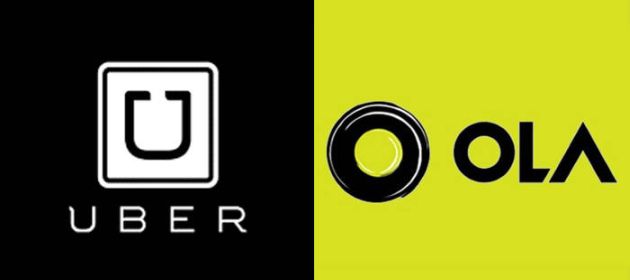In How Rideshare Startups Flipped A Switch To Create A Billion Dollar Business Overnight, I shared my thoughts on how rideshare startups have gone against common wisdom in many areas and used digital – aka SMAC (Social-Mobile-Analytics-Cloud) – technologies to create a billion dollar business virtually overnight.
But it’s more than just technology.
Before I elaborate, let me recap their business model from the previous post:
- Phase 1: Pay ₹2600 to drivers for staying logged in to the network for 14 hours (“show up”)
- Phase 2: Pay ₹2600 for doing 14 rides
- Phase 3: Pay ₹2600 for billing ₹2600 (“eat what you kill”)
- Phase 4: Alert drivers that company will eventually levy a commission but not charge it
- Phase 5: Turn on a switch in the software to start charging 15% commission.
(Actual figures may vary slightly from city to city)
As you can see, the mere flip of a software switch generated commissions and created a billion dollar business overnight.
But, rideshare startups used two other things to survive until then: Venture capital and innovative business practices. This blog post is about them.
VENTURE CAPITAL
Uber didn’t pioneer the use of technology to hail cabs.
I’ve used tech-hailed taxis in Singapore 20 years ago. It worked as follows:
 The tech-savvy city installed kiosks in the lobbies of buildings in all its business districts back in the late 1990s. If you wanted to escape the long lines for taxis in these areas – Suntec City, for example – you just dropped a SG$ 2 coin into the kiosk. That alerted the availability of a ride to all GPS-fitted cabs in the 15 minute radius of the said building. The first cabbie to hit the accept button was alloted the ride. All this happened within 15 seconds at the end of which the kiosk printed out a slip of paper on which the tag number of the cab and its ETA outside your building were mentioned. You stepped out of the building and got into the cab without waiting in the line.
The tech-savvy city installed kiosks in the lobbies of buildings in all its business districts back in the late 1990s. If you wanted to escape the long lines for taxis in these areas – Suntec City, for example – you just dropped a SG$ 2 coin into the kiosk. That alerted the availability of a ride to all GPS-fitted cabs in the 15 minute radius of the said building. The first cabbie to hit the accept button was alloted the ride. All this happened within 15 seconds at the end of which the kiosk printed out a slip of paper on which the tag number of the cab and its ETA outside your building were mentioned. You stepped out of the building and got into the cab without waiting in the line.
In the mid 2000s, the kiosks were replaced by SMS. You typed out a message on your feature phone and sent it to a number to hail a cab. Within a few minutes, a cab would arrive at the spot where you stood.
But this tech-hailed taxi system didn’t go mainstream. When I visited Singapore in 2008, the SMS-hailing system seemed to be defunct and the kiosks were nowhere to be found.
What buoyed the Ubers and the Olas of the world – and the Grabs of Singapore – that came much later was the availabilty of venture capital, a critical ingredient of new-age businesses.
During the first four phases of their aforementioned business model, rideshare startups didn’t earn any money from operations and stayed afloat entirely with VC funding.
INNOVATIVE BUSINESS PRACTICES
Rideshare startups were virtually gifting money away to drivers during the “show up” and “eat what you kill” phases. This made their platform extremely lucrative.
I think it was 2014 or so when an Ola driver told me, “Ola is like God for us”, referring to the incentives received by the driver community. The positive buzz helped cab aggregators grow the count of cabs on their network rapidly.
A couple of years later, ride hailing companies allegedly lured drivers to take a loan to buy a car just to deploy on the platform. Because the platform was very lucrative, many drivers bit. This further increased the supply of cabs and helped keep surge pricing to the minimum, thus keeping rides attractive enough to customers. It also put drivers under the pressure of loan repayment, which created a strong “platform lock-in” effect. Unlike Homejoy and other marketplaces that died due to “platform leakage” effect, Uber and Ola drivers couldn’t quit the platform on a whim.
While these might appear to be sharp business practices, they pale into insignificance compared to the stuff that Uber allegedly did at its inception. Click here and here for more. Like it or not, rideshare companies made liberal use of such practices in order to progress to the next phase of their business model, which required them to cut their losses and progressively become profitable.
An alliance / merger between Uber & Ola will create a monopoly. Beats me how it will create value for "driver partners & riders". Now, if @dkhos really meant "investors", I can believe that! pic.twitter.com/SebsYqZLwb
— Ketharaman Swaminathan (@s_ketharaman) March 13, 2018
In the next phase – Phase 6 if I continue with my previous numbering – the companies bumped up their commission to 20% (or even as high as 27%, according to MediaNama). Higher commission for the company meant lower compensation for drivers. The move didn’t go down well among the driver community. Many drivers protested.
The companies simply fired them. By replacing them with the buffer capacity built up on the platform by then, they were able to provide uninterrupted service.
If these MMS guys pull it off, they could become an even greater modern day startup legend than Uber & Ola. But will they? pic.twitter.com/hegPsUeEMe
— GTM360 (@GTM360) April 13, 2017
There was talk of breakaway drivers launching their own taxi service. One year later, nothing much has happened. (Looks like they realized that there’s a lot more to a cab service than just a shiny mobile app.)
During Phase 7, which began around six months ago, the companies slashed driver incentives, which led to a sharp decline in the income of drivers. Uber and Ola drivers protested by calling an “indefinite strike” last month.
On Day One of the strike, when I checked at my home in Kalyani Nagar, Pune, the app showed 1.5X surge price. An hour later, at my office in Viman Nagar, the app displayed “No Cabs”. A couple of hours later, a friend was able to get a cab from Kondhwa to Pune Airport for normal fare. In short, the strike quickly proved to be a damp squib.
While I’ve no inside track into what happened, here’s my theory of why the strike flopped:
 At the start of the strike, demand was normal but there were no supply of cabs. This created a massive gap between supply and demand. The heatmap on the driver app showed vast swathes of red denoting surge price. This meant drivers could earn more money by driving to the surge locations to pick up fares. In a Catch-22 like twist, drivers found out that they could achieve the objective of their strike to increase their income by abandoning the strike than by continuing with it!
At the start of the strike, demand was normal but there were no supply of cabs. This created a massive gap between supply and demand. The heatmap on the driver app showed vast swathes of red denoting surge price. This meant drivers could earn more money by driving to the surge locations to pick up fares. In a Catch-22 like twist, drivers found out that they could achieve the objective of their strike to increase their income by abandoning the strike than by continuing with it!
As they went back to work, supply slowly matched demand and surge pricing ended. In a couple of hours, everything went back to Business As Usual.
(Autos and yellow-top taxis normally get pelted by their union members if they work on the day of a strike. In contrast, unliveried Uber / Ola cabs can’t be spotted by strikers when they crisscross the city streets. The incognito status enjoyed by Uber / Ola cabs was another factor that nipped the strike in the bud.)
After two days, the strike was formally called off. According to reports in the media, the rideshare companies didn’t cede any ground on the core demand of drivers to resinstate incentives to the previous high levels. They did give permission to paint the company name in the local language (apart from English, that is) on the taxis.
This sounded quite strange to me.
The right to sport bilingual logos was not one of the demands for calling the strike. Besides, for reasons explained in How Rideshare Startups Flipped A Switch To Create A Billion Dollar Business Overnight, most drivers never displayed even the English logo in the past.
It appeared to me that the issue of bilingual logo was invented as a face-saving measure for drivers to end their strike.
All brands sell a dream to attract partners/franchisees. It's the same with Ola/Uber. Some achieve the dream, few surpass it, most come up short.
Want an assured income? Get a job.
No income drops to worry about. But then no potential upsides either.
— Ashok Lalla (@ashoklalla) March 25, 2018
I was quite convinced of this when I didn’t spot a single Uber / Ola cab with a bilingual sign more than two weeks after the strike ended.
The key driver of success of rideshare is digital technology meeting venture capital and innovative business practices.
On a side note, while rideshare is a great testimony of a new-age digital business, it has so far not used digital to cross any “analog redlines” in India. For example, I haven’t come across the equivalent of the Di Blasio Button by any ride hailing company in India. IMO the feature that Uber snuck into its app in New York City a couple of years ago is one of the most impactful digitalization techniques used by a business to pushback against harebrained regulation. This is perhaps a nod to the common wisdom that companies usually don’t take on the government in India, at least not publicly.
Both AirBnB & Uber struggled with regulators. Airbnb said, “We’re willing to work with you" whereas Uber was pissed off and basically implied “This is the way we’re doing it, and if you don’t like it, we’re going to run around you" ~https://t.co/BISgJMwYtx
— S.Ketharaman (@s_ketharaman) November 5, 2018
But rideshare startups are not your usual company. They have upended many common wisdoms so far.
How hard can it be for them to break one more stereotype, huh?
